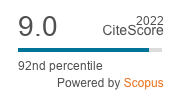Bacteriocins are bacterially-produced antimicrobial peptides that have killing activity principally against other relatively closely-related bacteria. Some bacteriocins of the lactic acid bacteria (LAB) have for many years been extensively applied in food biopreservation. However, especially during the last decade, a number of reports have appeared about unanticipated extensions to the generally rather narrow anti-bacterial activity spectrum of some of the LAB bacteriocins and novel applications have been proposed for bacteriocins ranging from controlling the growth of an increasingly-heterogeneous variety of pathogens, including Gram-negative multidrug resistant bacteria, viruses, yeasts, and in particular, difficult to control Mycobacterium spp., to their potential application as anticancer agents. How best can we assess this now rapidly-accumulating stream of reports on potential future applications of bacteriocins? Where is the line between realistic, science-based proposals and highly-speculative fiction and what are the ‘critical points’ that might help us to draw this line? In this review, we have attempted to analyse a selection of the presently-available data concerning relatively ‘unorthodox’ (i.e. beyond food preservation) applications of bacteriocins, and, by utilising our set of ‘critical points’, we endeavour to identify essential or/and missing information that appear crucial for success of the proposed applications.
REVIEW ARTICLE
Bacteriocins of Gram-positive bacteria having activity spectra extending beyond closely-related species
S.D. Todorov Related information
1Departamento de Alimentos e Nutrição Experimental, Faculdade de Ciências Farmaceuticals, Universidade de São Paulo, Av. prof. Lineu Prestes, 580, 13B, São Paulo 05508-000 SP, Brazil.
*Corresponding author: slavi310570@abv.
, B.D.G. de Melo Franco Related information*Corresponding author: slavi310570@abv.
1Departamento de Alimentos e Nutrição Experimental, Faculdade de Ciências Farmaceuticals, Universidade de São Paulo, Av. prof. Lineu Prestes, 580, 13B, São Paulo 05508-000 SP, Brazil.
, J.R. Tagg Related information2BLIS Technologies Ltd, 81 Glasgow Street, South Dunedin 9012, New Zealand.
Beneficial Microbes: 10
(3)- Pages: 315 - 328
Published Online: February 18, 2019
Abstract
Keywords: bacteriocins, lactic acid bacteria, Mycobacterium, virus, cancer
2022 Journal Impact Factor
5.4
source: Journal Impact Factor 2023™ from Clarivate™

Institutional Offers
For institutional orders, please contact [email protected].
-
A.A. Hibberd, C.C. Yde, M.L. Ziegler, A.H. Honoré, M.T. Saarinen, S. Lahtinen, B. Stahl, H.M. Jensen and L.K. Stenman
-
E.E. Blaak, E.E. Canfora, S. Theis, G. Frost, A.K. Groen, G. Mithieux, A. Nauta, K. Scott, B. Stahl, J. van Harsselaar, R. van Tol, E.E. Vaughan and K. Verbeke
-
K. Venema, J. Verhoeven, C. Beckman and D. Keller
-
E. Arvidsson Nordström, C. Teixeira, C. Montelius, B. Jeppsson and N. Larsson
-
J.E. Haarhuis, A. Kardinaal and G.A.M. Kortman
-
E.E. Blaak, E.E. Canfora, S. Theis, G. Frost, A.K. Groen, G. Mithieux, A. Nauta, K. Scott, B. Stahl, J. van Harsselaar, R. van Tol, E.E. Vaughan and K. Verbeke
-
K. Lippert, L. Kedenko, L. Antonielli, I. Kedenko, C. Gemeier, M. Leitner, A. Kautzky-Willer, B. Paulweber and E. Hackl
-
K. Tsilingiri and M. Rescigno
-
M. Ozen and E.C. Dinleyici
-
Y. Kobayashi, T. Kuhara, M. Oki and J.-Z. Xiao



